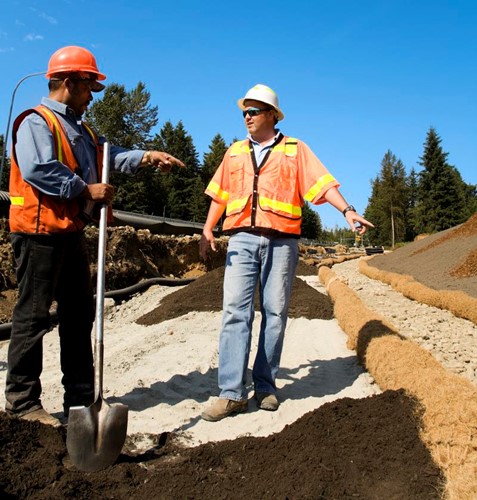Posted by: Malcolm Jarvis
When setting up a new outbound dialling campaign, you’ll typically have a number of dialling modes available to you. While these may differ between contact centre solutions, most will provide you with the choice of one or more of the following:
- Preview dialling
- Progressive dialling
- Predictive dialling
While there’s a very clear progression for the talk time you can expect your agents to achieve with each of these (preview being the lowest and predictive being the highest), this may not be all you need to consider when choosing an approach to placing outbound calls. This means that even if the goal of most of your agents is to be on live calls as much as possible, there may still be a use for non-predictive dialling within your business.
Before we take a look at what each of the automated dialling types are good at and what their limitations are, let’s first put them in perspective by looking at the benefits that all diallers give you over more manual approaches to outbound calling.
Manual Dialling and Click-to-dial
The most inefficient and ineffective type of call centre environment is the one where employees are given a list of numbers (on paper or a spreadsheet) and a telephone and are then required to work through the list attempting to call each number in turn. This old-fashioned manual dialling approach to outbound calling, as ruthlessly captured in the classic film Glengarry Glen Ross, is the baseline comparison for all dialling systems.
 Manual dialling requires agents to do all the work themselves
Manual dialling requires agents to do all the work themselves
Click-to-dial solutions are not much different to manual dialling, but are at least a step in the right direction. They work by linking an application such as a spreadsheet or CRM database to your phone system so that clicking on a telephone number automates the process of placing a call to that number. While it saves agents the time required to press the buttons on the phone to dial the number and prevents there being any risk of dialling the wrong number, that’s pretty much about it for the benefits of click-to-dial.
 Click-to-dial delegates some of the work but it's still highly inefficient
Click-to-dial delegates some of the work but it's still highly inefficient
All forms of automatic dialling, whether preview, progressive or predictive, all share the following benefits over manual dialling and click-to-dial:
Automatic disposition of no-answers after a set number of seconds
When placing outbound calls, Ofcom regulations state that businesses must give customers at least 15 seconds from the point the phone starts ringing to allow the phone to be answered.
Call back management
Call backs to potential customers are a critical part of most outbound campaigns. If these don’t happen automatically they’re all too easy to miss, resulting in lost business.
Retrying calls to answer machines, engaged numbers and calls that weren’t answered
Employing a strategic approach to retrying unsuccessful call attempts is essential to achieve effective data penetration (getting a definite yes or no in relation to each number in your data). Trying to achieve this manually using a list takes discipline and is nearly impossible to scale.
Rapid logging of call dispositions and scheduling follow-up actions
Time spent logging the outcome of each call and ensuring that follow-up actions are managed needs to be kept to a minimum to keep agents productive. If manual dialling in conjunction with a CRM database or workflow management system then this may available to some degree.
Visibility of live and historical metrics
Effective management of a call centre is heavily dependent on the quality of live and historical data available. While click-to-dial systems can usually provide some reporting functionality, manual dialling typically requires additional work to provide any metrics at all.
Data management and assigning data to agents
Automated dialling systems usually provide mechanisms that ensure the data being dialled can be controlled centrally and changed easily at any time. They should also provide facilities to distribute data among groups of agents according to the needs of the campaign.
Call recordings are logged against each record making them easier to locate
Manual dialling systems typically have no connection between the customer record and recordings of calls to that customer, making recordings more difficult to locate without additional software. Automated systems normally have this functionality built in.
In other words, while there are limited benefits to click-to-dial, and it’s certainly a step up from manual dialling, if you’re looking for an outbound contact centre solution, there are far better options available. Let’s take a look at each of them in turn.
Preview Dialling
If your agents need the ability to review large numbers of customer records prior to initiating phone calls to that customer, then a preview dialling campaign is ideal. Agents can usually choose not to dial a record and simply skip to the next one after providing a reason why the record wasn’t dialled.
 Preview dialling allows precision but volumes are low compared to the alternatives
Preview dialling allows precision but volumes are low compared to the alternatives
While preview dialling systems can’t predict which customers are going to answer the phone at any given time, good systems will attempt to schedule calls to be previewed for dialling at times when they’re most likely to be answered. A common approach is to retry customers at different times of the day following unsuccessful call attempts. For example, older systems typically achieve this by reattempting unsuccessful calls 26 hours later, but modern systems are a bit more sophisticated in their approach.
The main downside to using preview dialling on a campaign is that agents can potentially spend a significant amount of their day previewing customer records and then finding that when they place the call they can’t get hold of the customer. Fortunately, this effect can be reduced through a combination of:
- Good system design that ensures all the information an agent needs to read prior to placing a call is readily available and easy to digest as soon as the customer record is displayed
- Effective agent training to enable agents to evaluate and understand the information being presented to them as efficiently as possible so they can keep preview time to a minimum
- Monitoring and reporting of the amount of time agents spend previewing calls with feedback provided to slower agents on their performance in comparison with the rest of the team.
As an example of a not-so-good use of a preview dialling campaign, in the early days of the solar panels gold rush I encountered a campaign using the following approach to generating leads. Agents would preview a potential customer record, then use Google street view to help them find the customer’s property on Google maps satellite view, perform a rough survey of the customer’s roof (from outer space) to assess its suitability for solar panels, then, if after five minutes or so they had determined that the customer was a good candidate for solar power, they’d give them a ring. As you might expect, the ratio of customers who either had no interest in solar panels, no money for solar panels, didn't own their property and so couldn’t buy solar panels, or simply weren’t home to answer the call and talk about solar panels meant that this approach was rather short-lived.
On the other hand, for campaigns where agents place calls for a variety of different purposes and require a few seconds to orient themselves with the customer’s situation and the reason for the call before proceeding, preview dialling can be the perfect solution.
Progressive Dialling
Progressive dialling automates the process of placing calls to customers so that as soon as one call is dispositioned the next call starts to ring. Calls are only ever dialled on a one call per agent basis, so very few of the regulations that apply to predictive dialling are relevant when using progressive dialling on a campaign.
 Progressive diallers can get through far more calls while still falling outside a lot of dialling regulations
Progressive diallers can get through far more calls while still falling outside a lot of dialling regulations
Progressive dialling gives agents a short amount of time to review the details of the customer while the phone rings, although they don’t get the choice of whether to call the customer or not as they do on a preview dialling campaign. Of course this may be exactly what you want on many outbound campaigns.
The downside to progressive dialling is that during times of the day when customers are least likely to answer (for example mid-afternoon on residential campaigns), it can be a long time between conversations. On progressive dialling campaigns, agents need to wait as each call rings out (typically 18-20 seconds) before it can be dispositioned as a no-answer and they move on to the next call.
As an example of where progressive dialling can lose out to predictive dialling, in a past life I was involved in running an outbound single-supplier energy campaign where we were required to lease the majority of our data through the energy supplier themselves. We were running a progressive dialler at the time and every afternoon between 2pm and 4pm the campaign was simply dead. Agents could easily go for 30 minutes without a single live call. It didn’t take us long to work out that the reason for the unsustainably long waits was that the data we were being leased was profiled for affluent areas (the sort of customers the energy company most wanted), where the vast majority of householders were unsurprisingly at work during the day. A predictive dialler would have alleviated this to an extent, but as we were also strictly limited to the maximum number of retries per record, it was probably always going to be a struggle.
To minimise this effect in your own progressive dialling campaigns, you can try the following::
- Hold back a proportion of fresh data and release it during the quietest times of the day
- Segment your data so that the most difficult groups of customers to get hold of are called at the times they are most likely to answer
- Schedule lunch breaks so that they coincide with the quietest period of the day (typically this will be a bit later than a typical lunch break)
- Run a split shift, with the first shift stopping before the quiet time and the second shift starting close to the end of it
- Schedule agent training, reviews, coaching etc. during the quietest time of the day
Progressive dialling lacks the constant productivity that you can achieve with a predictive dialler, particularly if your data is less than fresh, but if it’s important that you don’t have any abandoned call messages being played to customers due to occasional over-dialling, then this can be an excellent choice.
Predictive Dialling
If you’re looking to maximise agent talk-time then a predictive dialler will typically provide the best results. The heart of a predictive dialler is the algorithm they use to estimate how many calls they need to place in order to get your idle agents talking on live calls as quickly as possible. The system then places calls to that number of customers, connecting each live call to an agent as customers answer. If the system overestimates the number of calls to place and more customers answer than there are agents available to connect the live calls to, then the system needs to play an automated message to the customer apologising for the call and giving them a chance to opt out of future calls.
 Predictive diallers are heavily regulated but get through more calls (and data) to maximise productivity
Predictive diallers are heavily regulated but get through more calls (and data) to maximise productivity
Predictive diallers used to be limited by the number of concurrent calls (channels) available to the phone system, but since the advent of Voice Over IP (VOIP), this is rarely a consideration these days. However, predictive diallers can’t just dial hundreds and hundreds of calls at once in order to keep agents on calls as:
- They’d very quickly run out of data
- They’d very quickly annoy any customers who’d otherwise be willing to listen to your agents
- They’d very quickly get your operation shut down by means of a very large fine from the ICO
This means that predictive diallers need to be sophisticated in order to maintain a constant rate of calls throughout the day, while ensuring that the rate of abandoned calls doesn’t exceed the permitted maximum (currently 3% of connected calls). There are lots of predictive dialling systems available, especially in the form of white-labelled versions of the “free” open source Vicidial platform, but there’s a huge amount of variation in the quality of dialling algorithms available and many require constant monitoring to ensure they don't land your business on the wrong side of the law.
Badly configured predictive diallers, along with voice broadcasting systems, are responsible for the vast majority of bad press related to outbound dialling. This has led to them being increasingly heavily regulated - much more than any other type of dialling system.
However, provided that your system operates within the rules, predictive dialling can be an extremely effective means of keeping agents active as well as achieving extremely high contact rates with your data. As agent costs continue to rise, ensuring that each agent is able to spend as much of their time talking as possible means that predictive dialling will remain an essential part of most businesses that employ outbound contact centre agents.
Summary
Let's summarise all that in a handy table:
| Preview | Progressive | Predictive | |
| Agents can view customer details before speaking | Yes | Yes | No |
| System automatically places calls to customers | No | Yes (1-to-1) | Yes (many-to-1) |
| System must follow regulations on abandoned calls | N/A | N/A | Yes |
| Rough agent talk time | Low/Medium | Medium/High | High |
| Rate of data use | Low | Medium | High |
| Automatic disposition of no-answers | Yes | Yes | Yes |
| Call back management | Yes | Yes | Yes |
| Retrying no-answers, engaged, answerphone etc | Yes | Yes | Yes |
| Rapid logging of call results and follow-ups | Yes | Yes | Yes |
| Visibility of live and historical metrics | Yes | Yes | Yes |
| Data management and assigning data to agents | Yes | Yes | Yes |
| Automatic linking of call recordings to customers | Yes | Yes | Yes |
So now we've run through the differences between preview, progressive and predictive dialling, hopefully you’ll have gained a few ideas as to where you might deploy them within your call centre. Running an effective outbound campaign is all about combining skilled, dedicated people with effective technology, and giving your agents the right tool for their job will always make them more effective and your campaign more profitable.
